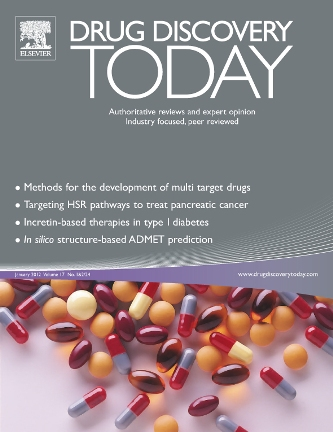选择性成像探针在tau病变中病理tau多态性的鉴别检测
IF 6.5
2区 医学
Q1 PHARMACOLOGY & PHARMACY
引用次数: 0
摘要
tau病变,包括阿尔茨海默病(AD)、匹克病(PiD)、进行性核上性麻痹(PSP)和皮质基底变性(CBD),其特征是tau蛋白的错误折叠和病理聚集,导致神经变性。尽管这些疾病的发病机制仍有争议,淀粉样蛋白包涵体的形成仍然是唯一可用的组织病理学标志。Tau内含物在结构和形态上都不相同,不同的Tau病具有不同的多态性。值得注意的是,这些多态性的选择性检测对于鉴别诊断、疾病监测和评估多态性的潜在危害至关重要,并对药物发现产生重大影响。本文综述了用于选择性检测与特定tau病变相关的病理性tau形式的成像探针的最新进展。我们探索了针对AD, PiD, PSP和CBD特征的tau多态性的化合物的应用。特别是,我们专注于讨论探针的选择性和敏感性,以区分临床前环境中不同的牛头病相关多态性。本文讨论了该领域的研究进展和不足,以指导研究人员寻找准确有效的探针来选择性诊断这些不同的神经退行性疾病。本文章由计算机程序翻译,如有差异,请以英文原文为准。
Selective imaging probes for differential detection of pathological tau polymorphs in tauopathies
Tauopathies, including Alzheimer’s disease (AD), Pick’s disease (PiD), progressive supranuclear palsy (PSP) and corticobasal degeneration (CBD), are characterized by the misfolding and pathological aggregation of the tau protein, leading to neurodegeneration. Although the pathogenesis of these diseases is still a matter for debate, the formation of amyloid inclusions still represents the only histopathological hallmark available. Tau inclusions are not the same in terms of structure and morphology, and different tauopathies are characterized by different polymorphs. Remarkably, the selective detection of these polymorphs is crucial for differential diagnosis, disease monitoring and evaluation of the potential harmfulness of polymorphs, with a significant impact on drug discovery. This review discusses recent advances in the development of imaging probes designed for the selective detection of pathological tau forms associated with specific tauopathies. We explore the application of compounds that can target tau polymorphs characteristic of AD, PiD, PSP and CBD. In particular, we focus on discussing the probes’ selectivity and sensitivity in distinguishing between the different tauopathy-associated polymorphs in preclinical settings. The progress and the weaknesses in this field are discussed, to guide the researchers in identifying accurate and potent probes for the selective diagnosis of these different neurodegenerative diseases.
求助全文
通过发布文献求助,成功后即可免费获取论文全文。
去求助
来源期刊

Drug Discovery Today
医学-药学
CiteScore
14.80
自引率
2.70%
发文量
293
审稿时长
6 months
期刊介绍:
Drug Discovery Today delivers informed and highly current reviews for the discovery community. The magazine addresses not only the rapid scientific developments in drug discovery associated technologies but also the management, commercial and regulatory issues that increasingly play a part in how R&D is planned, structured and executed.
Features include comment by international experts, news and analysis of important developments, reviews of key scientific and strategic issues, overviews of recent progress in specific therapeutic areas and conference reports.
 求助内容:
求助内容: 应助结果提醒方式:
应助结果提醒方式:


